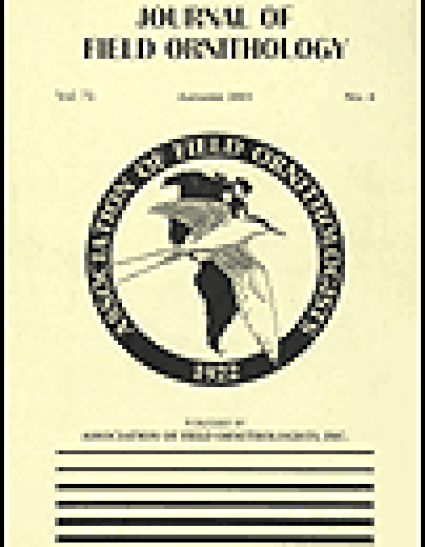
Article
Time-of-Day Effects on the Numbers and Behavior of Non-Breeding Raptors Seen on Roadside Surveys in Eastern Pennsylvania
Journal of Field Ornithology
(1995)
Abstract
Results are presented of 30 pairs of morning and afternoon roadside surveys of New World vultures and diurnal birds of prey in farmland habitat in eastern Pennsylvania during the non-breeding season. Eight-hundred-twenty-seven raptors, including members of two species of vultures and 10 species of diurnal birds of prey, were counted on 60 surveys between October 1992 and December 1994. Three species of raptors, Turkey Vulture (Cathartes aura), Red-tailed Hawk (Buteo jamaicensis) and American Kestrel (Falco sparverius), comprised 90% of all birds sighted. Although almost equal numbers of birds were seen on morning and afternoon surveys, species composition, the numbers of birds, and the flight behavior of individual species, differed significantly on morning and afternoon surveys. Time of day of survey affected different species differently. Numbers of Turkey Vultures increased significantly, those of Red-tailed Hawks decreased significantly, and those of American Kestrels remained the same between morning and afternoon surveys. In general, sampling variance was higher on morning than on afternoon surveys. These results, which clearly demonstrate the need to take time of day into account when conducting roadside surveys of raptors, suggest that the ability to compare data from different sites is limited by the extent to which those data were collected at the same time of day
Disciplines
Publication Date
Fall 1995
Publisher Statement
Published by: Wiley on behalf of Association of Field Ornithologists Stable URL: http://www.jstor.org/stable/4514057
Citation Information
Andrew G. Bunn, William Klein and Keith L. Bildstein. "Time-of-Day Effects on the Numbers and Behavior of Non-Breeding Raptors Seen on Roadside Surveys in Eastern Pennsylvania" Journal of Field Ornithology Vol. 66 Iss. 4 (1995) Available at: http://works.bepress.com/andrew_bunn/35/
